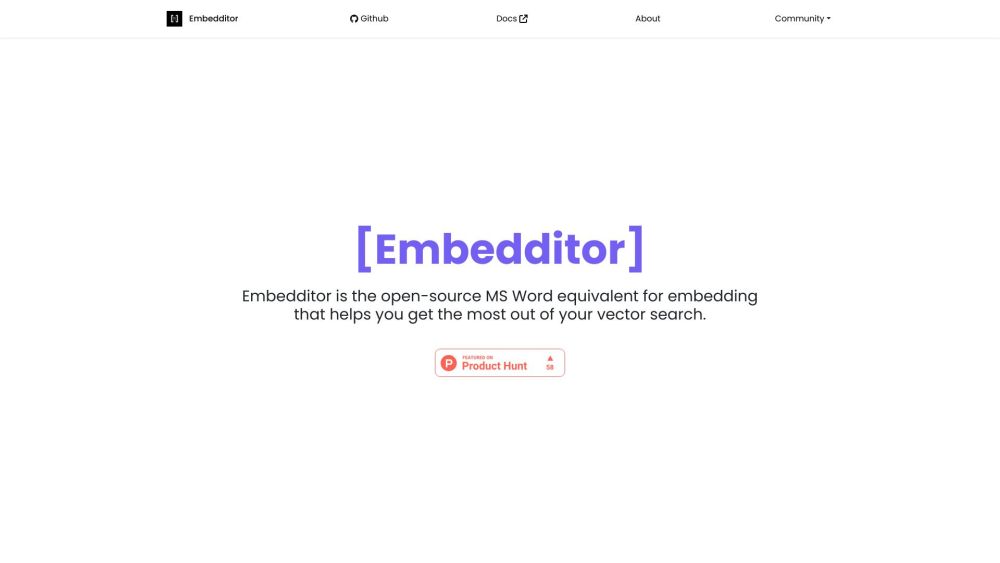
What is Embedditor.ai?
Embedditor.ai is an open-source tool designed to enhance the effectiveness of vector searches, akin to an advanced MS Word for embedding. It features a user-friendly interface that allows users to refine embedding metadata and tokens efficiently. By leveraging sophisticated NLP cleansing techniques such as TF-IDF normalization, Embedditor.ai boosts the performance and accuracy of applications reliant on large language models (LLMs). Additionally, it optimizes content relevance from vector databases by intelligently managing content structure and introducing void or hidden tokens. Users can deploy Embedditor.ai locally, in an enterprise cloud, or on-premises, ensuring secure data control. The platform also offers significant cost savings, reducing embedding and vector storage expenses by up to 40% by eliminating irrelevant tokens.
How to Use Embedditor.ai?
1. Download and install the Docker image from the Embedditor GitHub repository.
2. Run the Docker image to launch Embedditor.ai.
3. Open a web browser to access the Embedditor.ai interface.
4. Utilize the interface to refine embedding metadata and tokens.
5. Apply advanced NLP cleansing techniques to enhance token quality.
6. Optimize content relevance from vector databases.
7. Utilize features for splitting or merging content based on its structure.
8. Add void or hidden tokens to improve semantic coherence.
9. Choose to deploy Embedditor.ai locally or in an enterprise cloud or on-premises.
10. Save costs by filtering out irrelevant tokens, thereby improving search results.